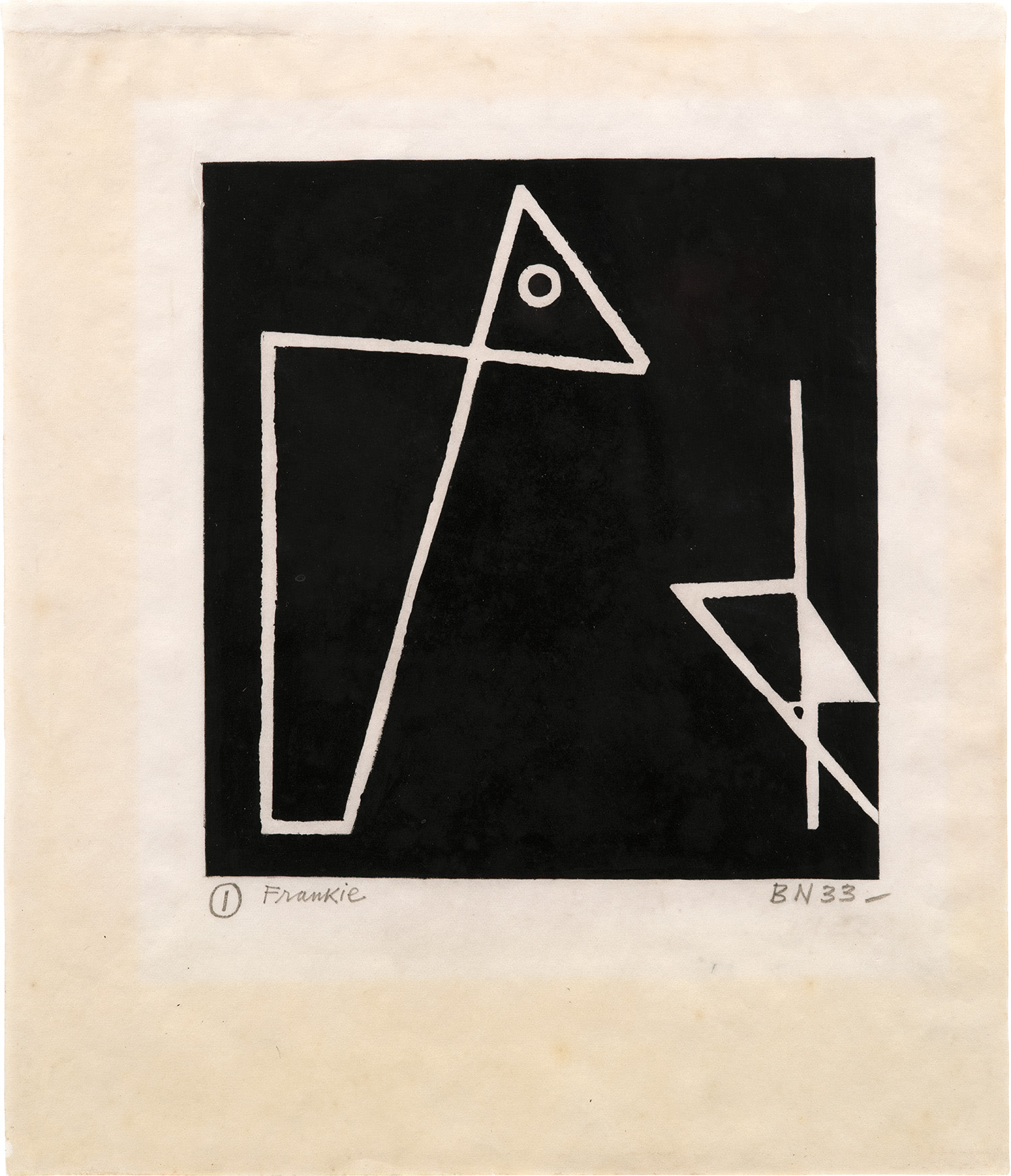



Property of a Distinguished Private Collector
16
Ben Nicholson
Foxy & Frankie (C. 2, see P.Q. II.2)
1933
Linocut in black oil paint, on wove paper, with full margins.
I. 6 1/4 x 5 7/8 in. (15.9 x 14.9 cm)
S. 10 1/8 x 8 3/4 in. (25.7 x 22.2 cm)
S. 10 1/8 x 8 3/4 in. (25.7 x 22.2 cm)
Signed with initials, titled, dated and annotated 'I' in a circle and 'Frankie' in pencil, possibly a unique earlier state before the diagonal line at the tip of the mouth. framed.